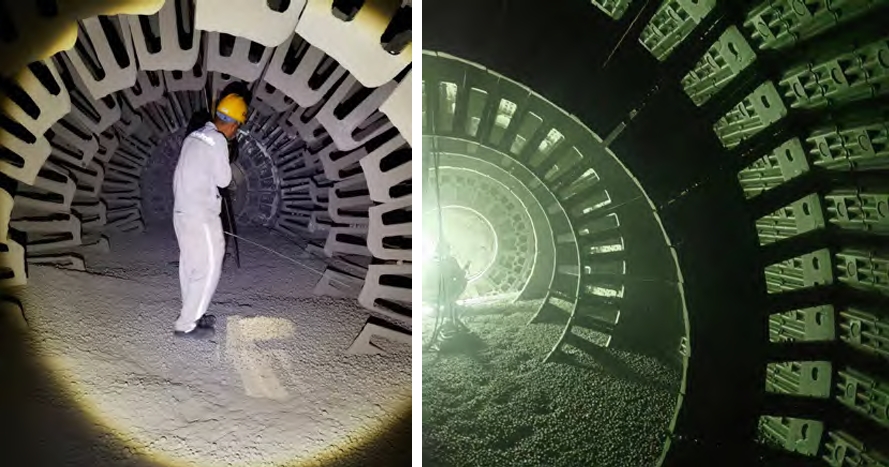Rotary grinding equipment efficiency critically depends on lining plate design and power management. Our analysis of a φ11m semi-autogenous grinding (SAG) mill revealed that filling rate directly impacts power consumption. At 50% filling rate, power peaks due to optimal cascading action:
$$P_{max} = K \cdot D^{2.5} \cdot L \cdot \rho \cdot \sqrt{\psi}$$
Where \(P_{max}\) = peak power (kW), \(D\) = mill diameter (m), \(L\) = mill length (m), \(\rho\) = material density (t/m³), \(\psi\) = rotational speed (rpm), and \(K\) = empirical constant.
| Filling Rate (%) | Power Deviation (%) | Optimal Motor Safety Factor |
|---|---|---|
| 10-40 | +8.2 | 1.5× |
| 50 | 0 | |
| 60-90 | +7.8 |
Material properties significantly influence lining plate wear. For the copper ore studied:
| Parameter | Value Range | Effect on Lining Plate |
|---|---|---|
| Bond Work Index (kWh/t) | 13.27-15.60 | High wear |
| A×b Parameter | 46.31-55.51 | High impact stress |
| Abrasion Index (ta) | 0.44-0.54 | Accelerated erosion |
Initial symmetric lining plates with 28° lifting angles showed premature failure due to insufficient height-to-ball-diameter ratios:
$$H_{eff} \geq 2 \times D_{ball}$$
Where \(H_{eff}\) = effective lift height (mm), \(D_{ball}\) = ball diameter (mm). For 150mm balls, initial \(H_{eff}\)/\(D_{ball}\) = 1.4 caused catastrophic impacts.

Evolution to asymmetric lining plates with variable angles demonstrated 23% lifespan improvement:
| Design | Lifting Angle | Plate Height (mm) | Throughput (Mt) |
|---|---|---|---|
| Symmetric | 28° | 290 | 2.0 |
| Asymmetric | 30°/15° | 340-380 | 3.49 |
3D wear mapping revealed axial wear differentials exceeding 40mm. Optimized designs incorporated:
- Variable face angles (25°-35° along axis)
- Zoned height adjustments (\(H_{feed}\) = 320mm → \(H_{center}\) = 380mm)
- Reinforced base plates (\(t\) = 110mm vs initial 80mm)
The refined lining plate configuration reduced fracture incidents by 68% while increasing metal utilization efficiency by 19%.
Complementary research on molybdenum ore compared HPGR (High-Pressure Grinding Rolls) with vertical stirred milling (CSM). Energy savings were quantified as:
$$E_{sav} = \frac{P_{ball} – P_{CSM}}{P_{ball}} \times 100\%$$
| Process | Specific Energy (kWh/t) | Savings vs Ball Mill |
|---|---|---|
| HPGR (F100=3mm) + CSM (P80=84µm) | 9.2 | 19.5% |
| HPGR (F100=5mm) + CSM (P80=84µm) | 9.8 | 14.9% |
Critical findings for lining plate optimization:
- Power calculations must accommodate filling rate inflection points
- Asymmetric designs increase effective lift height without proportional mass gain
- Variable-angle lining plates match wear profiles to impact zones
- HPGR+CSM circuits enable coarser feeds to downstream mills
These advancements demonstrate that strategic lining plate redesign coupled with circuit optimization can simultaneously enhance durability and energy efficiency in mineral processing systems.
